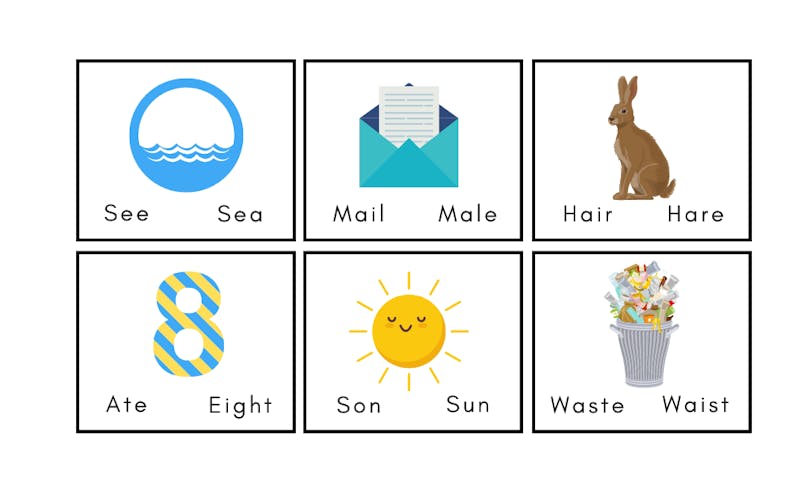Homophones are fun pairs of words that sound the same, but they have different meanings and spellings. While most people know the difference between a cell and a sale, they might still use them wrong when they are writing a sentence.
It is also common for this type of word pair to get mixed up with homonyms and homographs, which are similar but still quite different. Figuring out how to know when to say no to a specific spelling for a word and when to go ahead and play with word pairs in a poem are all important as you progress on your journey to learning more about using language properly.
Most Common Examples of Homophones
One of the best ways to learn how to use these words in your writing and speech is to know the most common pairs you’ll come across. Check out these word pairs to see if you use any of them on a regular basis.
- Ate/Eight
- Band/Banned
- For/Four
- Our/Hour
- Too/Two
- Mail/Male
- See/Sea
- Sun/Son
With these common word pairs, knowing which word to use for a specific instance is usually fairly simple. For example, most people know that they need to use the word “hour” to describe a specific amount of time versus “our,” which denotes ownership.
Click each card to learn the difference!
Use Allowed Homophones When Speaking Aloud
Once you can recognize common word pairs that sound the same, you have several ways to use them. One way is to use them to create emphasis. Much like the subtitle here, using words that sound the same is a way to attract attention because it instantly causes someone to increase their focus on the words that you use.
Authors often use words that sound the same to enhance their writing, especially when writing poems and wanting words to rhyme. Professional speakers will sometimes throw these word pairs into their speech to emphasize a slogan or to get people to perk up and listen. For instance, you might hear someone say that something is “two too many.” Playing around with homophones is a great way to create catchy sayings that people remember.
Accept That Homophones Get Mixed Up, Except When you Learn the Difference
Like many other word types, you’ll find that some of these pairs get quite challenging to differentiate. Using these words wrong is common when you are first learning to write, but they can cause people to doubt your credibility if you frequently make common grammar and spelling mistakes.
For this reason, you’ll want to accept that there are some words that are just plain confusing. However, you do have the power to improve your writing once you start watching out for those tricky words.
Work On Learning These Confusing Homophone Examples
Some of the harder word pairs to learn in this category involve ones that sound the same and sometimes have similar, but still different, meanings. Here are a few of the biggest ones that you’ll see people mix up, along with an explanation that can help you remember when to use each specific word.
Effect vs. Affect
Technically, these two words could sound different, but most people pronounce them with a soft vowel that makes the sound the same. Effect is a noun that expresses the end result of a change or action. Affect is a verb that expresses someone or something’s influence on a change.
Then vs. Than
Then is a word that people use to show the order of things that happened. Than is a subordinating conduction that you’ll use when making a comparison, such as when writing an if/than statement.
To vs. Too
Who would think that one little letter can change things so dramatically? Yet, this word pair is a common teacher’s nightmare. The word “to” is an infinite or preposition that gets tacked onto a verb. Too means also, and you’ll use this when you are indicating that another thing happened in a story.
Try Out These Ways to Learn More About Homophones
Learning how to pull homophones from your memory quickly helps you to come up with that perfect word pair when you need to make a point or write a poem. You’ll also find that committing those confusing pairs to memory helps you score better on tests and know what you’re talking about when you write.
Try adding these activities to your weekly routine to really nail down how homophones work in your writing.
- Create a memory game using common word pairs that sound the same.
- Use homophone word pairs to play a game of charades.
- Write a poem using a specific number of homophone word pairs.
- Create a chart, organizing words into homophone, homograph, and homonym categories.
A discussion on homophones can’t end without delving into their cousins, which are homonyms and homographs. Homonyms are words with the same spelling and pronunciation but different meanings, such as current, which can mean both the flow of water or being up-to-date. Homographs are words that have the same spelling but different pronunciations and meanings, such as wind or bow.
While it can get a little challenging to tell the difference between a homophone and a homograph, you’ll find that it gets easier with time.
